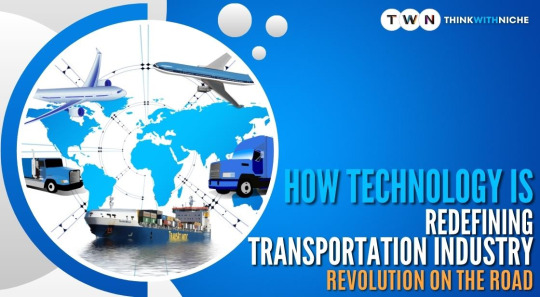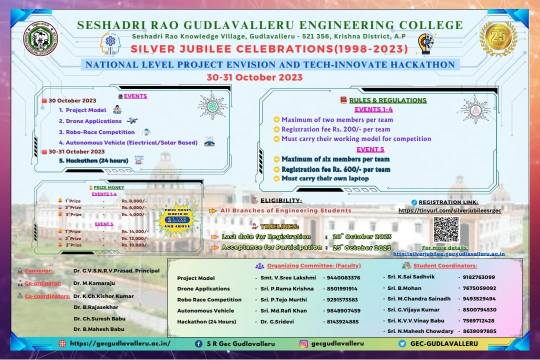#AutonomousVehicle
Explore tagged Tumblr posts
Link
🚖✨ La rivoluzione della mobilità è alle porte! Il 12 giugno 2025, Tesla lancerà i suoi robotaxi ad Austin, portando un cambiamento epocale nel modo in cui ci spostiamo. Ma cosa ci aspetta realmente? 🤔 In un'epoca in cui la tecnologia promette di diventare ancora più autonoma, Tesla si trova a fronteggiare sfide e scetticismi. Con una flotta iniziale di sole 10 Model Y, la strada è lunga e piena di sorprese. 🚀🌍 Scopri come la competizione con Waymo e le nuove normative stanno modellando il futuro delle auto senza conducente! Ci saranno grandi aspettative, sfide e opportunità. Non perdere il nostro approfondimento completo su questo tema e resta aggiornato sul futuro della mobilità! ➡️ [Leggi qui](https://innovateblog.info/non-solo-auto-austin-e-la-rivoluzione-robotaxi-tesla-tra-realt%C3%A0-e-aspettative) #Tesla #Robotaxi #MobilitàFutura #Austin #Innovazione #Tecnologia #GuidaAutonoma #Waymo #FuturoElettrico #Sostenibilità #AutoIntelligenti 🚗💨
#Robotaxilaunch#Full-SelfDriving#Autonomousvehicle#Waymorobotaxi#AustinTexas#DriverlessModelY#Urbanmobility#Teslasafety#Teslarobotaxi#ElonMusk
0 notes
Link
#AutonomousVehicle#AV#bulkacousticwaveclock#Futurride#LiDAR#lidarlaserdriver#mmWaveradarchip#radar#sensorchips#sustainablemobility#TexasInstruments#TI#TIAWR2944P#TICDC6C-Q1#TILMH13000#TILMK3C0105-Q1#TILMK3H0102-Q1
0 notes
Text
0 notes
Text
Internal Combustion Engine
Introduction

Internal combustion engine (ICEs), which power around 250 million roadway cars in the US alone, have been the foundation of industrial and transportation uses for more than a century. They are a powerful force in the automotive industry because of their durability, driveability, and compatibility with a wide range of fuels, including ethanol, natural gas, propane, diesel, gasoline, and biodiesel. Additionally, they can be included in plug-in hybrid and hybrid systems to improve range and fuel economy. Internal combustion engines are under increased scrutiny because of environmental concerns and the growing demand for greener alternatives, despite their extensive use and benefits.
Internal Combustion Engine Classification

Continuous combustion engines and intermittent combustion engines are the two main types of internal combustion engines that are distinguished by their combustion mechanisms.
1. Engines with Continuous Combustion
Fuel and oxidizer are continuously injected into these engines, maintaining a constant flame. Two of the best examples of continuous-combustion engines that are frequently used in industrial and aerospace settings are gas turbines and jet engines.
2. Engines with intermittent combustion
Conversely, the air-fuel combination is ignited in cycles by intermittent-combustion engines, commonly referred to as reciprocating engines. This group includes diesel and gasoline piston engines, which produce power by burning fuel in precise order.
The Internal Combustion Engine’s Operating Principles
The basic chemical process of combustion, in which fuel and oxygen combine to create energy, is at the heart of internal combustion engines. ICEs use direct fuel combustion to produce energy inside, as opposed to external combustion engines like steam engines.
An ICE is made up of a moving piston and a stationary cylinder. The crankshaft is turned by the piston’s movement, which is pushed by expanding combustion gases. The powertrain then uses this mechanical energy to drive the wheels of the vehicle.
Currently, there are two main categories of ICEs in production:
Spark-Ignition Gasoline Engines: These engines use a spark plug to ignite a mixture of gasoline and air before compression.
Diesel engines that use compression ignition only compress air before injecting high-pressure fuel, which ignites on its own because of the heat generated during compression.
The four-stroke cycle used by the majority of ICEs consists of four crucial stages:
The Cycle with Four Strikes
Stroke of Intake: The piston is close to the top dead center (TDC) at the start of the intake stroke. The piston descends as the intake valve opens, bringing in fuel and air (or just air in diesel engines). For the combustion chamber to receive a new charge, this stroke is necessary.




An engine cycle needs two full crankshaft revolutions (720°), and only one power stroke produces torque; the other strokes use energy.
Internal Combustion Engine Components
Important elements of an ICE consist of:
Cylinder Head: The camshaft, valves, valve buckets, return springs, spark plugs for gasoline engines, and fuel injectors for direct injection engines are all housed in the cylinder head. Additionally, it has engine coolant tubes.
Engine Block: The crankshaft, connecting rods, pistons, and cylinders make up the engine block. To regulate temperature, it also makes coolant flow easier.
Combustion Chamber: The combustion chamber is the area between the piston, cylinder head, and engine block where air-fuel combustion takes place.
Internal Combustion Engine Benefits

Compact Size: Internal combustion engines (ICEs) are substantially smaller than external combustion engines.
High Power-to-Weight Ratio: They are appropriate for transport applications due to their high power-to-weight ratio.
Portability: the ability to fit a variety of vehicles and allow for easier carrying.
Fast Start Time: Internal combustion engines (ICEs) may start nearly instantly, in contrast to steam engines.
More Efficiency: Compared to external combustion engines, it offers higher efficiency.
Reduced Maintenance: Needs comparatively less care.
Lower Lubricant Consumption: Lubrication is more effective than in external combustion engines.
Moderate Operating Temperature: In contrast to steam engines, internal combustion engines’ maximum temperatures only last a brief period.
Internal Combustion Engine Drawbacks
ICEs have significant disadvantages despite their benefits:
Limited Fuel Options: Rely on premium gaseous or liquid fuels.
High Fuel Costs: When compared to alternative energy sources, gasoline and diesel are more costly.
Environmental Issues: Compared to external combustion engines, internal combustion engines emit more pollutants.
Noise pollution: reciprocal engines produce a lot of noise during burning.
Power Restrictions: Not recommended for applications requiring a lot of power.
Internal Combustion Engine Applications
Many industries make extensive use of ICEs.
Gasoline Engines: Automobiles, boats, and airplanes all use gasoline engines.
Industries use gas engines to generate electricity.
Diesel engines power large machinery, trucks, ships, and railroads.
Industrial, maritime, and aviation settings employ gas turbines.
Internal Combustion Engines’ Future
Cleaner alternatives are becoming more and more necessary as environmental concerns and resource depletion become more urgent issues. Even with notable improvements in ICE efficiency and emissions management, their dependence on fossil fuels continues to be a major drawback.
To overcome these obstacles, research and development initiatives concentrate on:
Alternative Fuels: Sustainable substitutes include hydrogen, biofuels, and synthetic fuels.
Electrification: hybrid and plug-in hybrid technologies integrate electric motors to lower pollution and fuel consumption.
Advanced Engine Management Systems: Control systems powered by AI increase productivity.
Lightweight Materials: Better materials contribute to a lighter engine, which improves fuel economy.
Aerodynamic Enhancements: Improving a car’s aerodynamics helps it use less fuel.
Conclusion
Internal combustion engines have greatly aided modern industries and transportation. They are essential because of their success, reliability, and adaptability. However, ICEs need to change to be relevant as the world moves toward greener energy alternatives.
As ICE technology advances, attention is turning to more environmentally conscious options. Electric powertrains, hybridization, and advanced fuels are shaping the future of transportation. The long-term sustainability of internal combustion engines will depend on how well we balance environmental responsibility and energy efficiency. The secret to guaranteeing a sustainable and effective future in industry and mobility is to embrace innovation.
#Internalcombustionengine#AutonomousVehicle#sensors#Actuators#Dorleco#CANKeypads#CANDisplays#VCUs#Vehiclecontrolunit#EVSoftwareServices#E/Earchitectures
0 notes
Text
As the name says, the Automotive Testing Expo is a show for automotive testing, development, and validation technologies.
You can have an appealing and attractive exhibition stand that will give you high ROI by simply clicking at expostandservice.com .
#AutoTestExpo#newyear#automotivetesting#autonomousvehicle#exhibition#exhibitionbuilder#exhibitiondesign#exhibitionstand#customstand#modular#bematrixstand#tradeshow#exhibiting#exhibitionstanddesign#exhibitionstandcontracto#expostandservices#expo2025
0 notes
Text
Indian startup achieves level 5 vehicle autonomy, Tesla still stuck at level 2?

How did a Bhopal-based startup with one solitary car in its inventory achieve something that eludes Elon Musk's Tesla with virtually limitless resources at its disposal? Read More. https://www.sify.com/technology/indian-startup-achieves-level-5-vehicle-autonomy-tesla-still-stuck-at-level-2/
#VehicleAutonomy#ElonMusk#Tesla#IndianStartup#AnandMahindra#MahindraBolero#AutonomousDrivingSystem#AutonomousVehicle#SwaayattRobotics
0 notes
Text
How Technology is Redefining Transportation Industry: Revolution on the Road

The transportation industry, the backbone of our globalized world, is undergoing a radical transformation fueled by technological innovation.The transportation industry is undergoing a revolution fueled by technological advancements.
From self-driving cars and electric vehicles to connected infrastructure and drone deliveries, these innovations are fundamentally reshaping how we travel and move goods.
This article dives into the latest trends and breakthroughs redefining transportation, highlighting the potential benefits and challenges that lie ahead. We'll explore how autonomous vehicles (AVs) promise to revolutionize safety and accessibility, while electric vehicles (EVs) offer a cleaner alternative to combat climate change.
Additionally, connected vehicles utilizing the Internet of Things (IoT) are creating a network that improves efficiency and safety through real-time data exchange. Mobility as a Service (MaaS) platforms are further transforming personal transportation by offering seamless access to various options like ride-hailing and public transit.
Beyond personal travel, drones are making their mark on delivery services, particularly in remote areas. But the road to a sustainable future requires a multi-pronged approach.
We'll delve into advancements beyond EVs, exploring the potential of hydrogen fuel cells and the importance of sustainable car components made from bio-based and recycled materials.
Buckle up, as we explore how technology is redefining the transportation landscape for a cleaner, safer, and more efficient future.
Top Tech Trends Transforming Transportation:Revolution on the Road:
Transportation is the lifeblood of our globalized world, moving people and goods across vast distances. But the industry is undergoing a seismic shift, driven by a wave of technological advancements. From self-driving cars to electric vehicles and drone deliveries, technology is fundamentally reshaping how we travel and how goods are delivered.
This article delves into the latest trends and innovations that are redefining the transportation industry, highlighting the potential benefits and challenges that lie ahead.
Top Tech Trends Redefining Transportation
The transportation landscape is undergoing a seismic shift, driven by a wave of technological advancements. These trends are not just science fiction; they're actively shaping the way we travel and move goods today. Let's delve into the top five trends revolutionizing transportation:
1. Autonomous Vehicles (AVs): A Self-Driving Future
Undoubtedly, autonomous vehicles (AVs) are poised to transform transportation. These self-driving cars utilize a complex suite of sensors, cameras, radar, and LiDAR (Light Detection and Ranging) technology, coupled with powerful artificial intelligence (AI) to navigate roads without human input. While fully autonomous vehicles are still under development, pilot programs are underway in various cities worldwide.
Read More
0 notes
Link
#Advancedcartechnology#Aerodynamiccardesign#automotivedesign#Automotiveengineering#autonomousvehicle#Carofthefuture#ConceptVehicle#Eco-friendlycar#electriccar#electricmobility#Electricvehicledesign#FuturisticDesign#Greentechnology#High-techvehicle#Innovationintransportation#Luxuryelectriccar#moderntransportation#Sleekautomobile#sustainabletransport.#Zero-emissionvehicle
0 notes
Text
#copper#automotiveindustry#electricvehicle#autonomousvehicle#electronicsnews#technologynews#idtechex
0 notes
Text

National Level Project Envision and Tech-Innovate Hackathon event on 30-31 October 2023
Registration Link and Rules & Regulations Link are mentioned in brochure
#srgec#gec#gecgudlavalleru#srgudlavalleruengineeringcollege#projectexpo#hackathon#automation#vehicles#silverjubilee#srgecsilverjubilee#srgec2023#projectmodel#droneapplication#roborace#autonomousvehicle#technology
0 notes
Video
youtube
(via Rolls-Royce 103EX: The Future of Luxury Mobility)
#RollsRoyce103EX#Technology#Innovation#ConceptCar#Automotive#Design#FutureTech#FutureOfLuxuryMobility#AutonomousVehicle#LuxuryCar
1 note
·
View note
Link
#all-electrictraveltrailer#AutonomousVehicle#AV#California#CES#electricRV#electrictraveltrailer#ElectricVehicle#EV#Fremont#Futurride#Nvidia#NvidiaDriveAGXOrin#NvidiaGTC#Pebble#PebbleFlow#Starlink#supervisedautonomy#sustainablemobility
0 notes
Text
Regenerative Braking Systems and Control Strategies
Introduction

Regenerative braking systems are becoming more and more common in contemporary transportation systems, such as trains, industrial equipment, and electric and hybrid cars. During braking or deceleration, this novel braking technique enables the recovery and conversion of kinetic energy into electrical energy. By doing this, regenerative braking lessens the need for traditional friction braking systems, which release kinetic energy as heat, while also greatly increasing energy efficiency.
The basic ideas of regenerative braking, its essential elements, different control schemes, and its advantages and disadvantages will all be covered in this blog. We will also emphasize how developments in this technology are pushing the limits of efficient and ecological transportation.
Regenerative Braking System Fundamentals

Energy conservation is the fundamental idea underlying regenerative braking. Conventional braking systems release heat energy into the atmosphere after converting a vehicle’s kinetic energy. Regenerative braking, on the other hand, absorbs this kinetic energy and transforms it into electrical energy. Energy waste can be minimized and efficiency increased by using the recovered energy to power the electric motor right away or storing it in batteries.
Key Components of a Regenerative Braking System
Several crucial parts make up a standard regenerative braking system:
Electric Generator/Motor: This multifunctional part transforms kinetic energy into electrical energy while braking and acts as a motor when accelerating to provide propulsion.
Energy Storage System: Depending on the use, the recovered electrical energy is kept in capacitors or batteries. The total efficiency of the vehicle can be increased by reusing this stored energy.
Control System: The control unit is in charge of controlling the energy transfer between the traction system, energy storage system, and motor/generator. It decides how much energy can be efficiently recovered and when to use regenerative braking.
Techniques for Regenerative Braking System Control
Several control mechanisms are used to optimize regenerative braking’s efficacy and efficiency. These methods maximize energy recovery while guaranteeing smooth braking performance. Below, we list some of the most popular control techniques:
Torque Blending: This tactic guarantees a seamless changeover between regenerative and friction braking. To maximize energy recovery and minimize wear on traditional brakes, the system determines the required braking force and divides it between regenerative and friction brakes.
Regeneration Prioritization: The control system prioritizes regenerative braking over friction braking when it does not completely charge the battery. The amount of battery charge and the necessary deceleration force are two examples of the variables that influence the choice between the two braking techniques.
Regenerative Braking Modes: There are various regenerative braking modes available in many electric and hybrid cars, including “high” and “low.” While the low mode simulates traditional coasting and offers a more natural driving experience, the high mode offers sharper deceleration and increased energy recovery.
Predictive Control: To maximize regenerative braking, advanced control systems use prediction algorithms based on road gradients, traffic circumstances, and driver behavior. For example, when drivers approach a stoplight, they can reduce regenerative braking, and when they approach a downhill slope, they can increase it.

Benefits of Regenerative Braking Systems
The following benefits of regenerative braking systems enhance the effectiveness, performance, and sustainability of contemporary transportation:
Increased Energy Efficiency: Regenerative braking increases overall vehicle efficiency, especially in stop-and-go traffic situations, by transforming kinetic energy into reusable electrical energy.
Increased Driving Range of Electric Vehicles (EVs): Regenerative braking in electric and hybrid cars helps increase driving range by lowering energy loss, which eventually lessens the need for frequent recharging.
Decreased Operating Costs: Regenerative braking lessens brake wear and tear by reducing the need for conventional friction brakes, which lowers maintenance and repair expenses throughout the vehicle’s life.
Improved Braking Control: Particularly in slick situations, regenerative braking systems offer more control over braking force, which lowers the chance of sliding and increases overall vehicle stability.
Environmental Benefits: Regenerative braking systems help to reduce greenhouse gas emissions and a smaller carbon footprint by minimizing energy waste and dependency on fossil fuel-based energy sources.

Predictive and Adaptive Control: Regenerative braking can adjust to different road conditions and driving styles thanks to clever control algorithms, which enhance energy recovery and overall vehicle performance.
Sustainability and Energy Recovery: Regenerative braking is an essential technology for upcoming industrial and transportation applications since it can recover and reuse energy, which is in line with global sustainability goals.
Limitations and Difficulties with Regenerative Braking Systems
Regenerative braking systems have certain drawbacks and restrictions despite their many benefits:
High Initial Cost: Some individuals and organizations find regenerative braking technology prohibitively expensive to use due to the substantial investment needed in electric motors, control electronics, and energy storage devices.
Complexity: Regenerative braking introduces complexity to an automobile’s current systems, necessitating advanced hardware and software to efficiently control energy flow.
Weight and Space Restrictions: Adding batteries or capacitors raises a vehicle’s weight and space needs, which may affect its performance and design adaptability.
Limited Energy Recovery in Some Situations: Road conditions and driving habits affect how well regenerative braking works. Compared to stop-and-go urban driving, vehicles on highways or at consistent speeds may have less energy recovery.
Standardization and compatibility issues: When transferring between car brands or models, there may be compatibility issues because different automakers use different regenerative braking technologies.
Noise Concerns: Although this is usually a small problem, some drivers may find the sound made by regenerative braking systems strange or disturbing.
Restricted Performance at High Speeds: Regenerative braking works best at modest braking and lower speeds. During high-speed deceleration or emergency braking, it might not offer a substantial energy recovery.
Conclusion :
In terms of industrial machinery and transportation, regenerative braking systems and the control schemes that go along with them are revolutionary.
Significant advantages of these systems include increased EV range, lower maintenance costs, better braking control, decreased environmental impact, and increased energy economy. Regenerative braking is essential to contemporary mobility solutions since it supports energy conservation and sustainability activities.
Researchers and developers must resolve issues such as energy recovery efficiency constraints, system complexity, and high implementation costs. Continued research and development will address these challenges as technology develops, increasing the efficiency and accessibility of regenerative braking.
In the future, widespread adoption will depend on manufacturer standards and compatibility. Regenerative braking will become more and more important in improving the efficiency and sustainability of industrial and transportation applications as it continues to advance.
Modern VCUs, CAN Displays, CAN Keypads, and EV Software Services are our areas of expertise at Dorleco, where we assist companies in putting effective regenerative braking systems and energy management systems into place.
Our cutting-edge products improve contemporary electric vehicles and industrial applications’ performance, economy, and sustainability.
To find out more about how our solutions may improve your transportation systems, get in touch with us at [email protected] right now!
#RegenerativeBraking#AutonomousVehicle#sensors#Actuators#Dorleco#CANKeypads#CANDisplays#VCUs#Vehiclecontrolunit#EVSoftwareServices#E/Earchitectures
0 notes
Text
If you have your perfect WordPress website in 2025, then you also know the competition for online visibility is very high. Even if you are running a blog, eCommerce store, portfolio, or business website, both SEO plugins and WordPress hosting go with each other to help your website rank high in search engine result pages (SERPs).
Selecting the best WordPress hosting service provider is just the start, but uniting that with a powerful SEO plugin? That is how you take all your site traffic game to the high standards.
#GPUDedicatedServer#GPUHosting#HighPerformanceComputing#AIPowered#DeepLearning#MachineLearning#AIInfrastructure#TechStack#CloudGPU#ServerHosting#AIDevelopment#CryptoMining#GameDevelopment#3DRendering#VideoEditing#ScientificComputing#AutonomousVehicles#CloudGaming#TechTrends#DigitalTransformation#CloudComputing#StartupTech
1 note
·
View note
Text
#Continental#autonomous#ConnectedMobility#SoftwareDefinedVehicles#SDV#AutomotiveTech#SmartMobility#EV#AutonomousVehicles#Cybersecurity#JeanFrancoisTarabbia#DigitalTransformation#FutureOfMobility#electricvehiclesnews#evtimes#autoevtimes#evbusines
0 notes
Text
Auto Drive- Will It Ever Be a Reality?

With infrastructure in place, EVs can play a significant role in the future of autonomous vehicles, but there is a long way to go. Reab More. https://www.sify.com/ai-analytics/auto-drive-will-it-ever-be-a-reality/
#AutoDrive#ElectricVehicle#AutonomousVehicle#Self-drivingVehicle#TeslaCybertruck#AI#ArtificialIntelligence#Autopilot#CruiseControl
0 notes